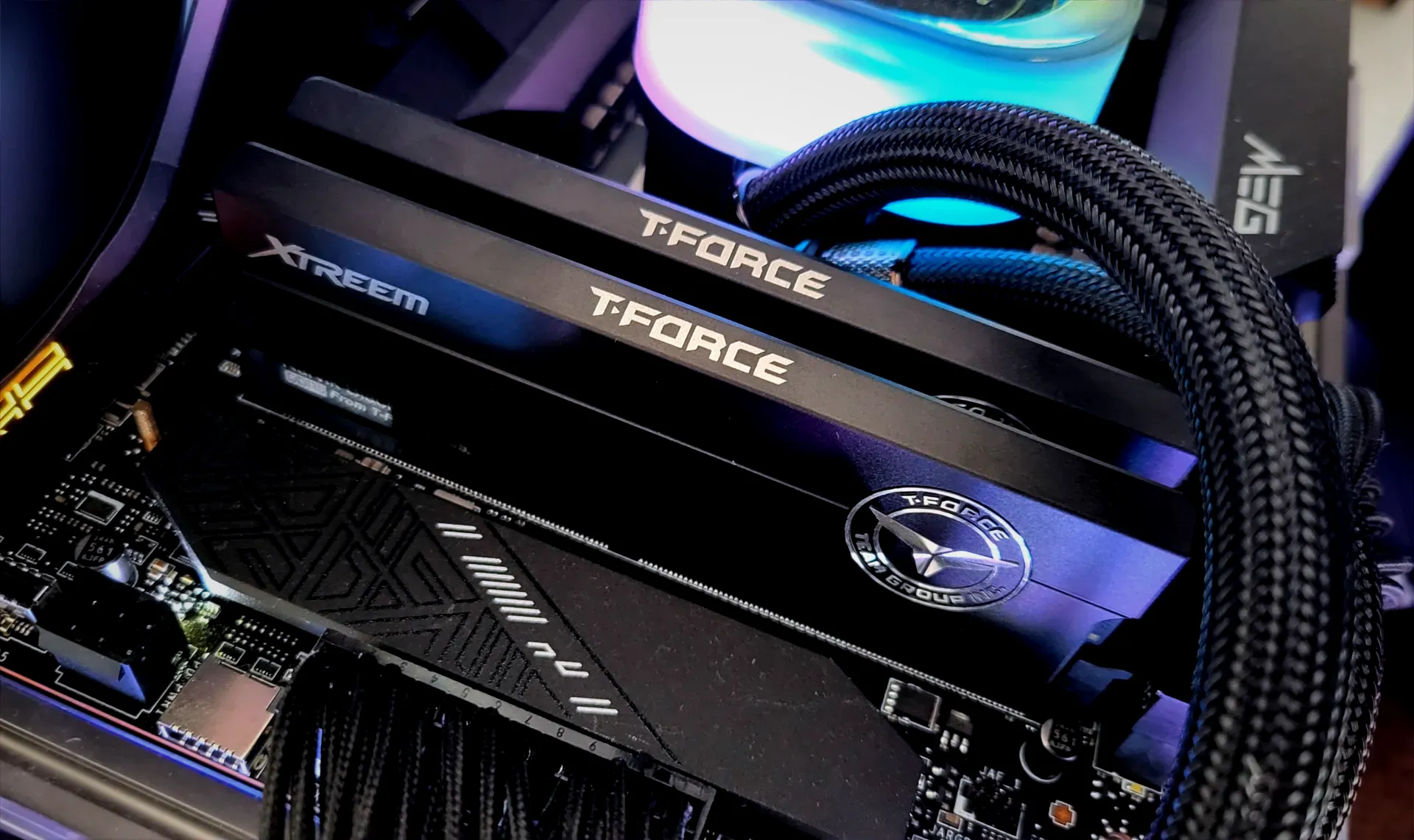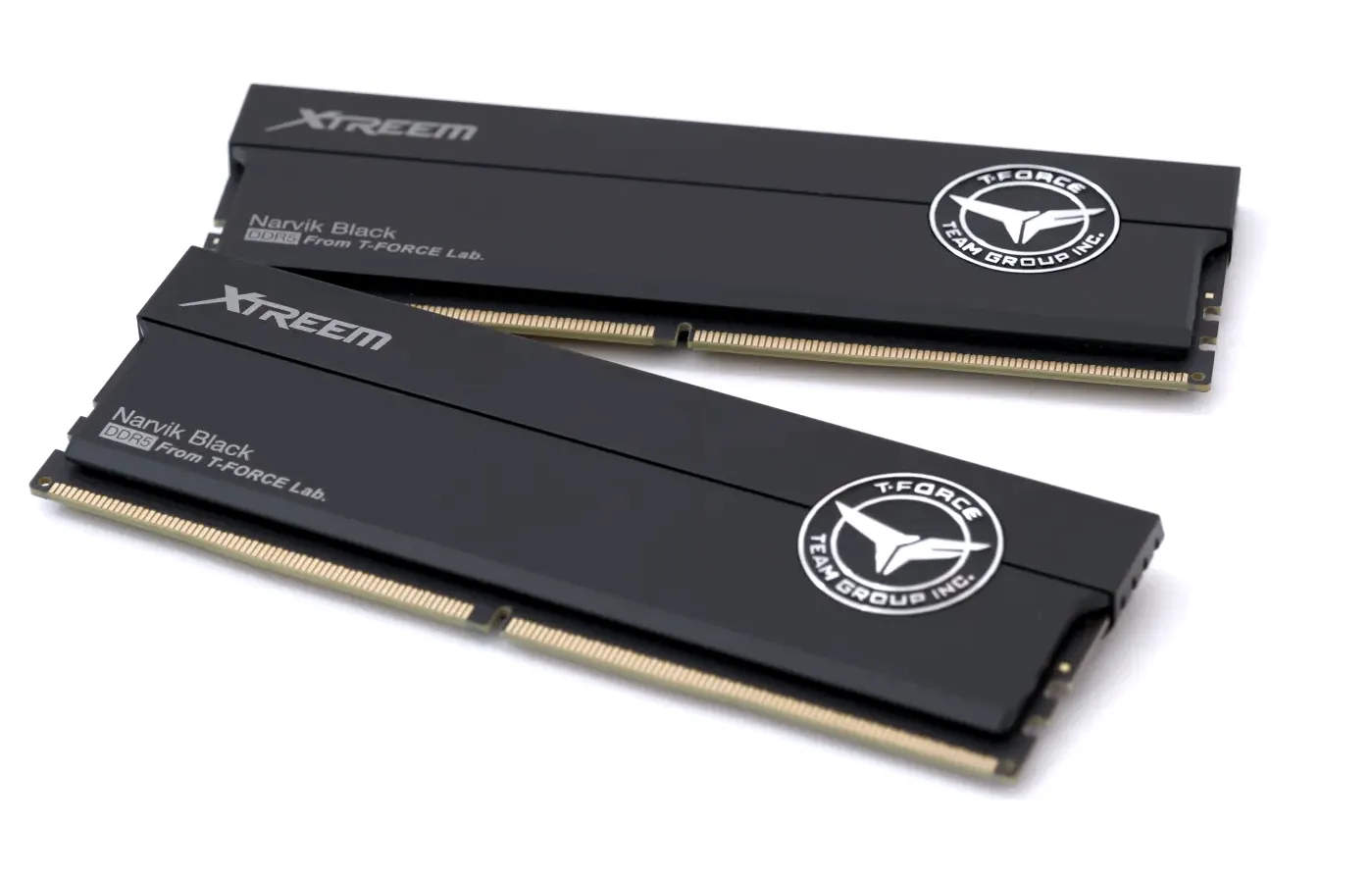TeamGroup T-Force XTREEM 48GB DDR5 – 8200 MHz CL38 review
In a move to cater to customers seeking premium products, TeamGroup has unveiled its XTREEM series of memory products with speeds reaching up to DDR5-8200. The Z790 motherboards efficiently support memory speeds surpassing 8000MHz, a capability also achieved by AMD’s Ryzen 7000-series CPUs with recent BIOS updates. This advancement in motherboard and CPU compatibility has reduced the need for extreme cooling solutions to reach these high memory speeds. Consequently, the market is witnessing the introduction of memory modules capable of operating at 8000MHz and above.
Among the key players in this sector is Teamgroup, which has launched the T-Force Xtreem DDR5 memory series. This series includes models with speeds of 7600MHz, 8000MHz, and up to 8200MHz, offered in 2x16GB or 2x24GB kit configurations. Our analysis focuses on the DDR5-8200 flagship kit. The DDR5-8200 48GB memory kit stands out for its combination of high speed and substantial capacity, catering to high-end gaming systems. However, it primarily appeals to enthusiasts and overclockers. For gamers using less advanced hardware, more affordable memory options with lower speeds might be more appropriate. Featuring timings of 38-49-49-84 and operating at 1.4V, the Teamgroup Xtreem DDR5-8200 kit is single-sided and likely utilizes Hynix A-Die chips. These chips are known for their reliable performance at high speeds, making them suitable for advanced memory performance requirements.
MSI Z790 ACE MAX and Extreme Memory Speeds above 8000 MHz: didn’t work well
In this review, I utilized an MSI Z790 ACE MAX motherboard, boasting four memory slots and unofficial support for speeds exceeding 8000 MHz. However, when attempting to enable XMP with the F10 BIOS, I encountered a no-post situation. To resolve this, I had to elevate the VDDQ voltage to the 1.4V range to attain functionality at 8000 MHz (note that 8200 MHz was not achievable). Even at 8000 MHz, sustained usage for 24/7 operations is not recommended as games would still crash. Nevertheless, my synthetic benchmark suite successfully ran without evident errors, which can be deemed a satisfactory outcome. This serves as a reminder that memory modules operating at such high speeds do not offer a plug-and-play experience. Currently, it’s safe to assert that only a limited number of motherboards are capable of running at these speeds through XMP activation alone.
After consulting both MSI and TeamGroup both concluded two things, the IMC (integrated memory controller) on the 14th Gen Core processors is hit and miss, and you’ll likely need a binned CPU with a really well-working IMC. We’re limited in this regard. Next to that the motherboard matters, correctly MSI advised us to use a two-slot motherboard. However, with the ACE MAX at hand we simply continued.
So 8200 Mhz was a no-go no matter what we tried, 8000 Mhz was reasonably stable. In the following pages some photos and results. Again games kept crashing ergo we will not/cannot include any result on them.


